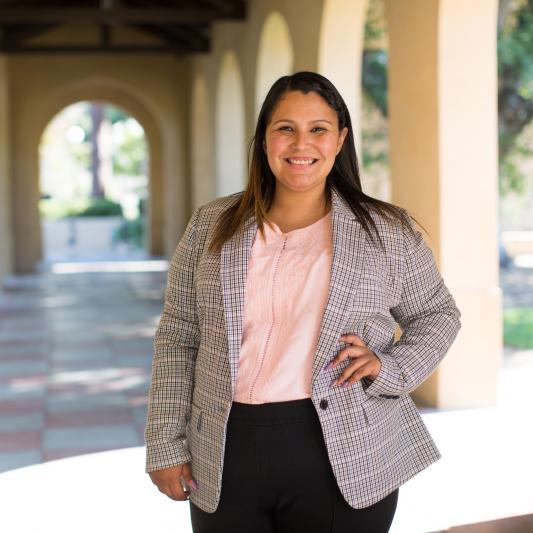
Camille Fabo
When Camille Fabo, MA ’22, was 14 years old, she moved from Cameroon to France with her mother and brothers, while her father commuted between continents so she could have a better education.
Fourteen years later she moved again, this time to Stanford – to learn how to bring better schools back to Cameroon.
As a student in the GSE master’s program in international comparative education, Fabo was part of a cohort of fellow students from countries including Brazil, Chile, Mexico, Japan, China, Rwanda, and the United Kingdom. “International comparative education is not only a concept here – it’s your classmates,” she says. “So we discuss real things happening in our countries, in our continents.”
For her thesis Fabo, who began her career in business, examined the influence of international governmental organizations (IGOs) on education programs in three sub-Saharan African countries: Cameroon, Rwanda, and Nigeria, which she carefully selected to capture a cross-section of colonial histories, languages, and literacy rates. “African countries are made of very different cultural identities and social realities that have to be taken into account,” she says, suggesting that education curricula ought to be tailored even from village to village.
She used word-frequency analysis and other quantitative tools to analyze the World Bank, the Global Partnership for Education, and UNESCO’s guidelines for education aid. There she saw IGOs were aware that effective teaching should be culturally relevant to students – “because they do use this bait word of ‘local’ and ‘local need’ ” – but she detected a lack of follow-through. “They never name the needs,” she says.
Fabo, who hopes someday to open a school in Cameroon, also completed a certificate of African studies at Stanford – and shortly before collecting her diploma, she gave birth to her first child. She recently began her job hunt, she hopes with an IGO. “Now I am ready to work and let my baby see his mother working.”
Photo credit: Marc Franklin



